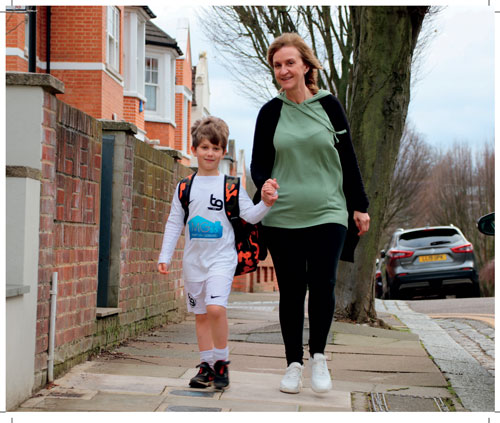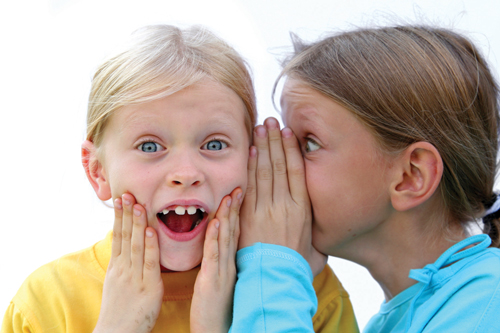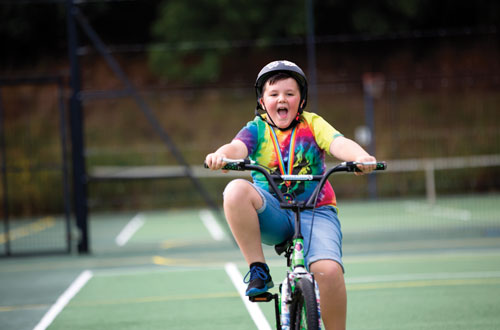
by Russell James
Glide Balance Bike Classes
Sometimes it’s the simple things in life that are the most rewarding. Learning to ride a bike without stabilisers is one of them. Once your child has a bike, cycling is a fun and free activity that they can enjoy with friends and family for life.
It’s easier to learn to cycle when you’re young and it’s a life skill that your child will have forever.
Encouraging your child to ride a bike while they’re young helps to establish healthy exercise habits that are likely to stay with them for life.
Bike riding is a skill that comes with a whole range of benefits. While most of us know that regular cycling contributes to better physical health, there are plenty of other reasons why learning to ride a bike is more important than ever. Here are just a handful of them.
Bike riding is a great way to get your children excited about outdoor exercise from an early age.
Getting outdoors is wonderful for children. They get natural sunlight, which gives them vitamin D, and they get a lot of fresh air, which allows them to get a good sleep at night. The better sleep they get, the healthier they are and the more their body will be able to grow.
Physical activities like cycling have a positive effect on your children’s brain. There’s a very simple reason for this: during physical activity, your child’s whole body, including the brain, is supplied with more oxygen-rich blood and nutrients. This enhances your child’s ability to concentrate and think creatively.
Cycling plays an important role in the overall growth of your child. Riding a bike not only improves physical fitness, it also benefits your child’s learning development and mental health, allowing them to grow mentally and emotionally, gaining strength in their decision making ability. Research shows that students who ride a bike to school are more focused and ready to learn, compared with those who are driven to school by car.
Taking part in re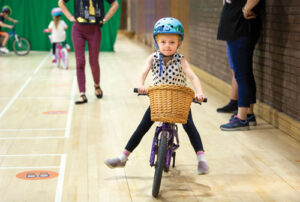 gular physical activity also has links to increased happiness, as well as giving children more opportunities to make friends and social connections.
gular physical activity also has links to increased happiness, as well as giving children more opportunities to make friends and social connections.
Cycling is an activity that all ages can enjoy. Mums, dads, children and even grandparents can take part in a family bike ride. It’s a great way to share some quality time, and it’s good for you too. Remember, the key to family bike rides is to have fun. So start slowly and take plenty of breaks to give little riders time to rest.
Teaching your child to ride a bike has long-term benefits for the environment. Using active transport like cycling instead of driving reduces carbon emissions, eases traffic congestion and eliminates parking problems. Less pollution and less traffic means our communities will become greener, healthier and less stressful places to live.
Bikes could be described as the perfect vehicle for transport. Once your child gets older, riding a bike becomes a quick and healthy way for them to get to and from school, sporting and play activities. Even better, it saves you time because your child won’t have to rely on you for lifts – now that’s a benefit every parent can relate to!
Jump on a bike and cycle with your children and you could see the kind of health benefits gym members dream of. Cycling raises your metabolic rate, helping you to keep the weight off. Regular cyclists are as fit as an average person 10 years younger. Cycling firms the thighs and bottom, and can even help tone the tummy muscles.
According to a recent survey a third of primary school children have not learnt to ride a bike. Glide wants to change this. Glide, teaches children from two to four years old to ride their balance bikes confidently in a group environment on a weekly basis during term-time. Glide then teaches primary school children to ride their bikes without stabilisers in two hour sessions during term-time (five children max) and three hour sessions (10 children max) during the school holidays. Lets make Britain stabiliser free!




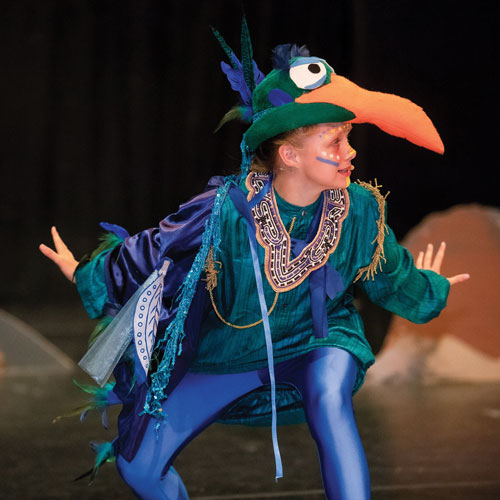
 If every opportunity is seized, there is wonderful scope for creating a powerful cross-curricular approach to developing a show. By learning about the literature, history, art, music, and dance that surrounds a story, we cultivate an appreciation for traditions, beliefs, design and stagecraft. As part of the preparations for our school’s recent production of The Lion King this term, the girls studied the patterns, designs and colours used in African prints before creating their own designs for fabrics, masks and marketing materials. They studied each character in the script and crafted symbols and emblems to represent them; meticulously forming links between characters who were related or belonged to the same group. Later, these were hand printed onto fabrics using block printing techniques so that they could finally be made into the cast’s costumes. Through workshops with external educators, they learnt about the importance and significance of symbolism in Adinkra printing; the rhythms and collective energy used in African drumming; and the storytelling techniques, as well as traditional movements, that can be generated through dance. We focused on the importance of recycling materials and made masks and props out of plastic milk bottles. This process was amazing – our girls were captivated by the transformation achieved with these simple objects. In addition to this, by singing songs in African dialects, we enhanced our understanding and appreciation of sounds and languages. The opportunities for extending the students’ learning through stimulating and interlinked topics are boundless.
If every opportunity is seized, there is wonderful scope for creating a powerful cross-curricular approach to developing a show. By learning about the literature, history, art, music, and dance that surrounds a story, we cultivate an appreciation for traditions, beliefs, design and stagecraft. As part of the preparations for our school’s recent production of The Lion King this term, the girls studied the patterns, designs and colours used in African prints before creating their own designs for fabrics, masks and marketing materials. They studied each character in the script and crafted symbols and emblems to represent them; meticulously forming links between characters who were related or belonged to the same group. Later, these were hand printed onto fabrics using block printing techniques so that they could finally be made into the cast’s costumes. Through workshops with external educators, they learnt about the importance and significance of symbolism in Adinkra printing; the rhythms and collective energy used in African drumming; and the storytelling techniques, as well as traditional movements, that can be generated through dance. We focused on the importance of recycling materials and made masks and props out of plastic milk bottles. This process was amazing – our girls were captivated by the transformation achieved with these simple objects. In addition to this, by singing songs in African dialects, we enhanced our understanding and appreciation of sounds and languages. The opportunities for extending the students’ learning through stimulating and interlinked topics are boundless.
 Children’s empathy and emotional intelligence are developed through everyday interaction but they are also nurtured by music, books, and in particular, watching live theatre performances. When watching characters interact on stage, we as the audience connect with them and experience what they are thinking and feeling as if we were thinking or feeling it ourselves – we are practicing how to understand others. Having a safe space to explore difficult emotions is essential to strengthening empathetic muscles and live theatre provides the perfect platform for this. Bill English, founder of the San Francisco Playhouse, states that: “Theatre is like a gym for empathy. It’s where we go to build up the muscles of compassion, to practice listening and understanding and engaging with people that are not just like ourselves. We practice sitting down, paying attention and learning from other people’s actions. We practice caring.”
Children’s empathy and emotional intelligence are developed through everyday interaction but they are also nurtured by music, books, and in particular, watching live theatre performances. When watching characters interact on stage, we as the audience connect with them and experience what they are thinking and feeling as if we were thinking or feeling it ourselves – we are practicing how to understand others. Having a safe space to explore difficult emotions is essential to strengthening empathetic muscles and live theatre provides the perfect platform for this. Bill English, founder of the San Francisco Playhouse, states that: “Theatre is like a gym for empathy. It’s where we go to build up the muscles of compassion, to practice listening and understanding and engaging with people that are not just like ourselves. We practice sitting down, paying attention and learning from other people’s actions. We practice caring.” to the theatre can be a fantastic way of making lasting memories and spending real quality time together. For children (and grownups!) going to see a play feels like something special, something out of the ordinary. Whether it’s the grandeur of the building itself, finding your red velvet seats or begging for a tub of ice cream in the intermission, the experience of going to the theatre is something unique before the play has even begun.
to the theatre can be a fantastic way of making lasting memories and spending real quality time together. For children (and grownups!) going to see a play feels like something special, something out of the ordinary. Whether it’s the grandeur of the building itself, finding your red velvet seats or begging for a tub of ice cream in the intermission, the experience of going to the theatre is something unique before the play has even begun.